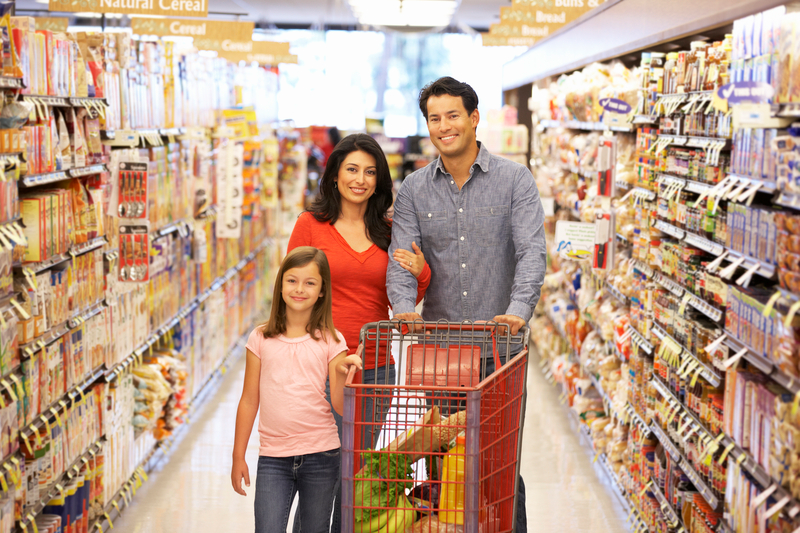Among other changes the COVID-19 pandemic wrought on the business landscape, was how consumers made their purchases and what they bought. Prior to the pandemic, consumer packaged goods (CPG) manufacturers and retailers often placed the greatest stress on the goods they sold, today the focus has turned to the consumer. Analysts from EY note, “It’s been over a year since quarantine orders and lockdowns rolled across the United States. Last March, consumers were met with uncertainty as they began to stockpile toilet paper and hand sanitizer, shifted almost immediately to online shopping for everything from clothes to essentials to groceries, and moved to working virtually. A year later, so much and so little have changed.”[1] They are not alone in their assessment, Boston Consulting Group (BCG) analysts write, “The COVID-19 pandemic has upended markets and dramatically reshaped consumption habits. Few industries remain unaffected by these profound changes.”[2]
How the Pandemic has Affected Consumer Behavior
EY analysts identify four trends they believe have become truths for the post-pandemic period. They are:
1. Consumers’ focus shifts from the here and now to the bigger picture. EY analysts observe, “Consumers are worried about what today will mean for their future.” They go on to note, “Retailers and brands will need to be much more intentional about how they look at their consumers holistically: not just how they shop and buy, but how they live and how their purchase decisions are driven by the most important parts of their lives, like finances and family.”
2. At-home consumption is here to stay. According to the EY analysts, “People are not just consuming more at home; they are building their entire lifestyles around their household. In the future, 26% expect to work from home more often, 28% expect to spend less on travel than before, 43% will cook more often at home, 50% will exercise at home more often and 40% will be less inclined to be involved in experiences outside their home.” As a result, they note, “Companies must now consider how their product and service assortment caters to a home environment and potentially add premium offerings.”
3. Online reigns supreme. Ali Amarsy, Senior Vice President of Global Product Strategy at Publicis Commerce, writes, “COVID-19 has catapulted us into the future. In 2020, global e-commerce sales growth jumped three years in the first three months of stay-at-home mandates, with a share of overall retail matching 2023 predictions. … Huge shifts in consumer behavior have left many businesses, often working in outdated systems and processes, faced with new challenges as they try to capture increased demand.”[3] The EY analysts add, “Even though most stores are now open with safety measures in place, 60% of consumers are currently visiting brick-and-mortar stores less, and 43% will shop more often online for products they previously bought in stores.” As a result, they note, “In order to be successful in e-commerce, you must think bigger than e-commerce. The core question retailers must ask themselves first is not ‘What e-commerce investments do I need to make?’ but rather ‘What consumer experience do I want to offer?’”
4. Consumer trust is still fragile. According to EY analysts, “Trust is hard won from consumers in a normal environment, and all of the uncertainty the last year has brought with it has even further tested that notion.” Apparently, trust has been a casualty of the pandemic. EY analysts explain, “When we first launched the Index in April 2020, nearly a quarter of US consumers said they completely trust brands (23%) and retailers (24%). Fast-forward one year later, and the trust picture is much worse. Only 10% of US consumers completely trust online only retailers and chain retailers. Thirteen percent completely trust CPG brands.” Author and ethics expert Joel Malkoff writes, “Customer trust in business is eroding: 69% of customers do not trust advertisements, and 71% do not trust sponsored ads on social media, according to a nationwide poll. Customers used to trust salespeople and advertisements to guide them in their buying decisions. No longer: today, we trust colleagues, friends, family, and third-party reviewers.”[4] The EY analysts conclude, “The onus is on companies to earn and maintain trust with consumers through transparency, authenticity of their message and brand, a shared purpose and a consistent experience that delivers on the brand promise.”
If consumer behavior has truly changed for the long-term, then CPG manufacturers and retailers need to understand how they must adapt to these new realities.
Maintaining Strong Consumer Demand
Although post-pandemic demand for CPG products will likely decrease, demand is predicted to remain strong. Journalist Sam Danley (@sam_danley) reports, “Demand for consumer packaged goods in 2021 will slow from the record levels experienced during COVID-19 while remaining above pre-pandemic norms, even as vaccines become widely available, the Consumer Brands Association (CBA) predicted. The association published a new report highlighting the post-pandemic outlook in 2021. CPG purchases are expected to decelerate by 1% to 2% from 2020 levels while still growing by 7.4% to 8.5% compared to 2019 levels.”[5] BCG analysts believe CPG companies should just assume demand will remain high. They recommend CPG companies consider the following strategies to maintain strong growth in 2021 and beyond:
Capture growth from post-pandemic shifts in demand. The BCG analysts recommend that CPG companies “continue to invest in winning brands that are in attractive categories and demand spaces. At the same time, [they should] aggressively reshape the portfolio through strategic M&A.” Journalist Kim Overstreet suggests CPG companies should especially focus on products for home consumption used by remote workers. She explains, “More than 82% of employees who have worked remotely during the pandemic want to continue to do so, at least some of the time, with resulting at-home consumption of more products for these workers.”[6]
Strategically reignite in-store brand activation. “As shoppers return to stores,” write the BCG analysts, “secure high-impact in-store placements — but also optimize product assortment to minimize discount depth and protect elevated price points.”
Anticipate developments in the retail landscape. According to the BCG analysts, CPG companies should “evolve organizational, product, and marketing capabilities to capture growth in channels, such as value and e-commerce, that are increasingly attractive to consumers.” Google executives observe, “The acceleration in digital adoption, especially e-commerce, is one of the most obvious and relatable trends driven by the pandemic. Necessity spurred new users and use cases, and it’s only natural that habits will stick around in areas where we’ve been introduced to superior experiences for getting what we need. … Introducing more consumers to the benefits of such experiences is altering their behaviors and, more importantly, their expectations. In turn, more businesses and brands will stop defining digital narrowly as another “channel” for selling things, but instead as an enabler of transformative, user-first experiences that boost loyalty.”[7]
Sharpen the private-label defense strategy. Journalist Mike De Socio reports, “The pandemic accelerated the consumer shift toward smaller manufacturers, as big companies struggled to meet demand and shoppers tried smaller or niche brands, according to new research from IRI. This allowed smaller CPGs and private label to gain 1.3 points in share, or $12.1 billion in sales, marking the fifth consecutive year that large manufacturers have lost market share.”[8] In order to counter this trend, BCG analysts suggest CPG companies “renew the focus on differentiated product advantage, and offer the right package sizes at the right price points. Harness demand science to develop differentiated insights and focus on value-added complexity.”
Create operational resilience. In order to create operation resilience, BCG analysts insist CPG companies need to “use data as the new basis for scale across the value chain (for end-to-end demand planning, for example). Rethink internal ways of working to enable more productive and more responsive operations.” Cognitive solutions, like the Enterra Supply Chain Optimization System™, can help create operational resilience by helping to optimize many supply chain processes.
From what experts are saying about the CPG future, one thing is clear: Consumers will be the focus of Consumer Packaged Goods companies.
Footnotes
[1] Infographic, “US Future Consumer Index edition 6: how a year in pandemic changed consumerism,” EY, March 2021.
[2] Aman Gupta, Peri Edelstein, Kate Mann, and Seth Marcus, “The Pandemic Was a Game-Changer for CPG in 2020. Who Won, and What’s Next?” Boston Consulting Group, 11 March 2021.
[3] Ali Amarsy, “The future of commerce is here. Are you ready?” Think with Google, November 2020.
[4] Joel Malkoff, “Why Honesty and Integrity Pay: The Benefits of Truth-Based Marketing,” MarketingProfs, 15 April 2021.
[5] Sam Danley, “Higher CPG demand expected to continue after COVID,” Meat + Poultry, 23 March 2021.
[6] Kim Overstreet, “Five Post-COVID Trends that will Define the CPG Industry,” Packaging World, 30 March 2021.
[7] Marvin Chow and Kate Stanford, “4 COVID-era trends that will have a lasting impact on the products and experiences people want,” Think with Google, March 2021.
[8] Mike De Socio, “Big Food lost $12B in sales to small CPGs and private label in 2020, IRI says,” Food Dive, 4 February 2021.





